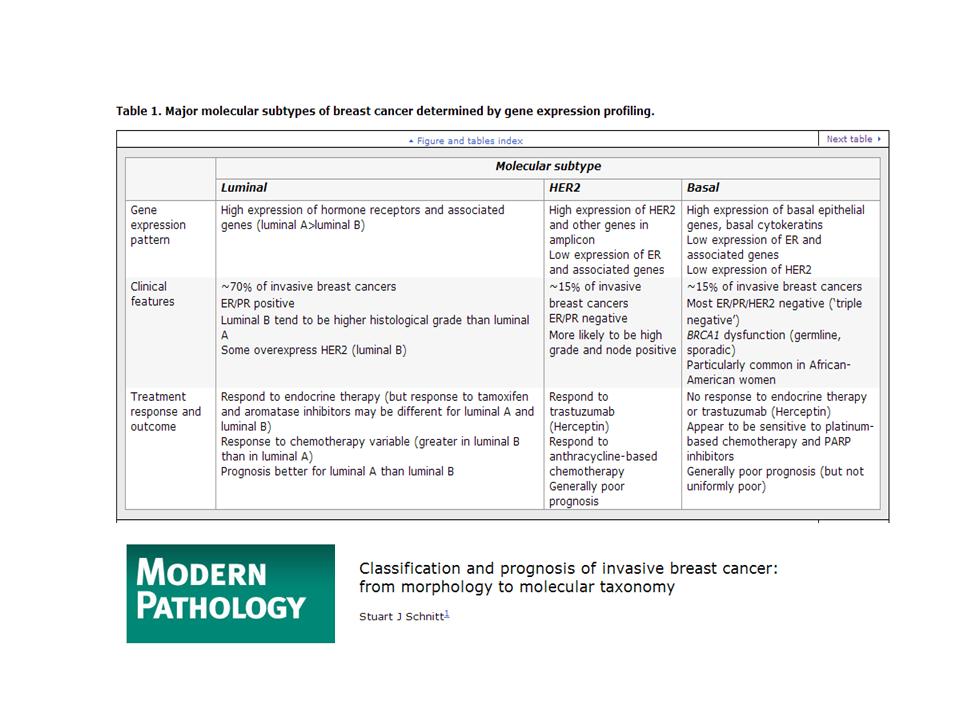Tumour heterogeneity: a challenge for Diagnosis
Diagnosis is an exercise of categorisation. Many pathological entities are still defined using the anatomical location. Tumours are a clear example of this situation but things are now changing based on genetic profiles.
Breast cancer, colon and ovarian cancer are good examples of the emerging role of genetic in medical diagnosis. Different subtypes are now very well defined and they have prognostic and therapeutic implications.
Breast cancer subtypes have prognostic and therapeutic implications. Estrogen and progesterone receptors and
HER-2 are the main markers used for this classification
Colorrectal cancer shows specific mutations and they have been used to decide treatment in clinical practice.
K-RAS mutation defined a subpopulation of patients without response to Cetuximab. N-RAS mutation is gaining influence on treatment decision with therapeutic implications also.
Ovarian cancer has been defined as different entities based on the histological aspect. Now we are starting to disantangle the genetic profile associated to each subtype.
Our concepts are evolving very fast from an anatomical view to a more subtle and specific genetic profile with prognostic and therapeutic implications.





